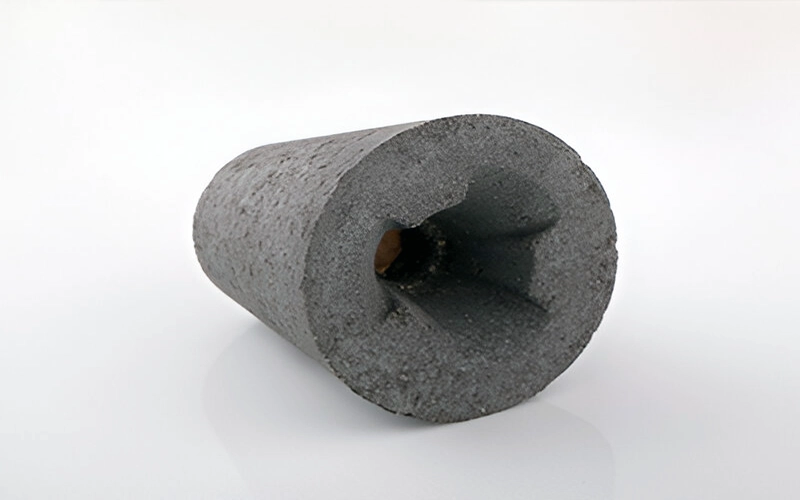Tundish nozzle zirconia refers to zirconia-based refractory nozzles used in continuous casting operations in the steel industry. Positioned at the bottom of a tundish — an intermediate vessel between the ladle and mould — these nozzles control the flow of molten steel into the mould, ensuring smooth, controlled casting. Due to the extreme operating conditions involved, tundish nozzles must possess excellent thermal shock resistance, corrosion resistance, and mechanical strength. Zirconia (zirconium dioxide, ZrO₂), with its outstanding refractory properties, is one of the preferred materials for this application.
Zirconia’s high melting point (approximately 2,700°C), low thermal conductivity, and superior resistance to molten metal attack make it ideal for use in the steelmaking environment. When used in tundish nozzles, zirconia ensures reliable performance at high temperatures and helps maintain consistent flow rates of molten steel. It resists erosion and chemical attack from steel and slag, minimising the risk of nozzle clogging or degradation during casting operations.
Tundish nozzle zirconia is often used in combination with other refractory materials, such as alumina or graphite, to optimise cost and performance. Some nozzles feature a zirconia insert or a composite structure where the working face (exposed to the steel) is made of zirconia, while the outer body is made from less expensive refractories. This design balances performance with economic considerations.
One of the main benefits of zirconia tundish nozzles is their role in improving the quality and consistency of steel products. Uniform steel flow reduces the likelihood of casting defects such as inclusions, cracks, or uneven solidification. Additionally, zirconia’s durability allows for longer casting sequences without requiring nozzle changes, improving operational efficiency and reducing downtime.
.

Tundish nozzles are typically manufactured through pressing and firing methods or by isostatic pressing, followed by sintering at high temperatures to achieve the required density and mechanical properties. Some nozzles may also incorporate zirconia-stabilised materials (such as yttria-stabilised zirconia) to enhance toughness and thermal cycling resistance.
In summary, tundish nozzle zirconia plays a critical role in modern steelmaking, offering the high-temperature stability, corrosion resistance, and structural integrity needed for efficient and high-quality continuous casting. As steel production technology continues to advance, the use of advanced ceramics like zirconia in key components such as tundish nozzles remains essential for performance and productivity.
The product contains different Zro2 content according to different application areas. The series of zirconia tundish nozzles developed by the company are made of imported raw materials, additives and stabilisers with advanced technology and sintered under high temperature.

| Size | Zirconia |
|---|---|
| 11-11.5-12-12.5-13-13.5-14-14.5-15mm | 75%, 85%, 95% |